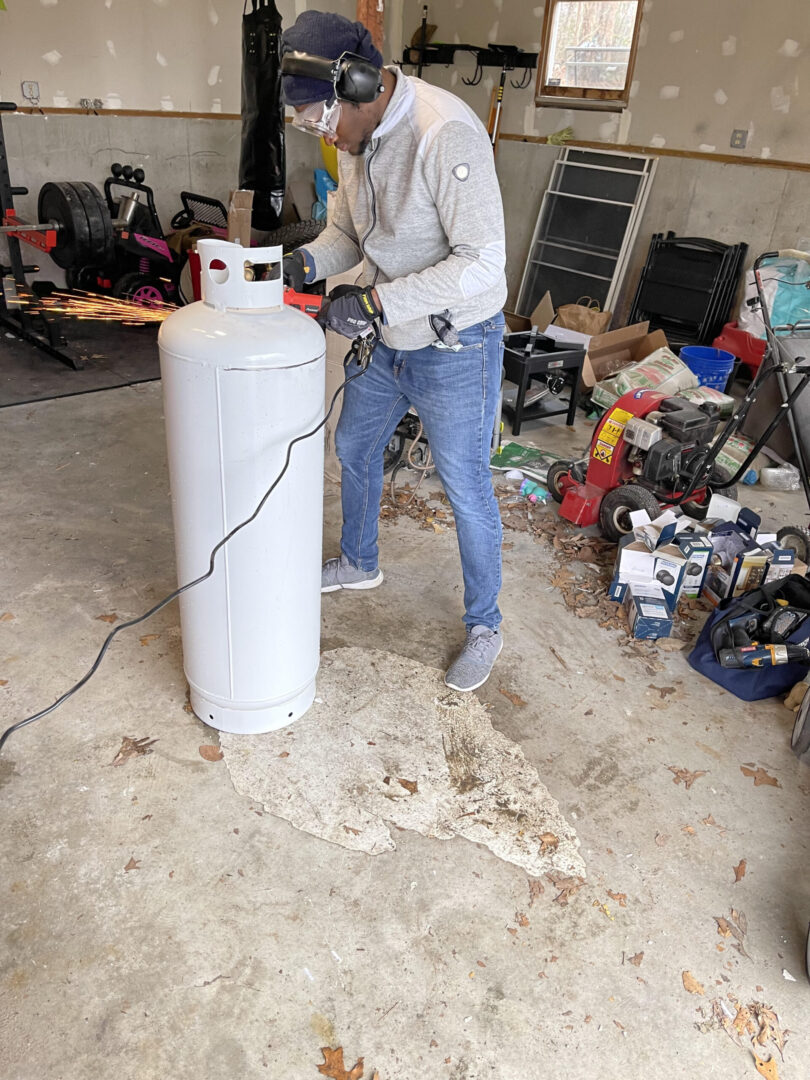OLD SAYBROOK – By this fall, a new business plan to open on Research Parkway, turning Old Saybrook’s town brush pile into biochar as a strategy to capture carbon from the dead wood before it’s released into the atmosphere.
BluSky co-founder Will Hessert said his long-time friend Jay Henry saw the announcement for the competition – XPrize Carbon Removal competition – where hundreds of different teams attempt to win a share of $100 million in prize money by building projects that can “capture” more than 1,000 tons of carbon emissions a year.
Henry called Hessert with an idea – take excess brush from heavily-wooded Connecticut towns and process the wood into biochar before it decomposes and starts releasing carbon back into the atmosphere.
“It was the same exact idea that I already had,” Hessert said. “So it was like, ‘Alright, we better start a company.’”
Hessert said BluSky’s goal is for its facility to remove about 10,000 metric tons of carbon a year by 2024, the deadline for projects entered into the contest.
“It’s a very lengthy competition with an incredible amount of due diligence,” Hessert said. “You need to make sure that, for instance, when the town of Old Saybrook drives wood chips to our facility, we have to calculate how much CO2 went into the atmosphere when that truck drove from place to place, to make sure we’re taking away [carbon emissions]. We don’t want to be making the problem worse by adding more emissions than we’re capturing.”
The process starts by putting wood chips in the chamber of a “pyrolysis furnace,” which takes away all the oxygen in the chamber and heats up until the wood chips decompose into a charcoal-like substance called biochar, Hessert said.
The biochar is the main product of the pyrolysis process, and Hessert said it can be used as a fertilizer, an additive to concrete or asphalt, or as treatment for algae growth on a lake or pond.
Blusky is mainly interested in the biochar because it’s an effective way to store carbon, and would look to have its biochar certified by the International Biochar Initiative to show that at least 89 percent of the carbon buried as biochar would still be in the ground in 100 years, Hessert said.
Along with the biochar, the process also generates gas and oil byproducts. The oil is thick and low in energy, Hessert said. So instead of using more energy to refine it into another product, it would be sold to a company that would inject the oil into the ground, where it would crystallize.
The remaining gas is a combination of methane, hydrogen, carbon monoxide and carbon dioxide. They can’t release that gas into the air, so Hessert said it would initially be stored in tanks like propane.
Then the gas would be burned to power the pyrolysis furnace, or burned in a generator that could sell electricity to the grid, Hessert said. It’s a better alternative than letting that wood end up in landfills, where it would break down into carbon dioxide and methane gasses, he said.
Eventually, Hessert said the company wants to establish a process that would turn the remaining carbon dioxide into stone – a process that is the subject of experiments in Iceland.
“We want to get as close to 100 percent [carbon] capture as possible, which is why we’re working on that CO2 mineralization,” Hessert said. “So it’s not just the biochar and the oil, it’s also the CO2 gas that all gets captured in various ways.”
BluSky would take wood chips from the large brush piles at the Old Saybrook and Old Lyme transfer stations as its fuel, Hessert said. Both towns already chip their brush and leave the wood chips for landscapers or others to use, and they’ve agreed to truck the chips to BluSky to be processed into biochar, Hessert said.
For now, BluSky’s focus is getting the facility running and scaling it up enough to handle the brush from those two towns, but Hessert said he’d like to build more facilities to process wood waste for other towns, as well.
The question they’ll have to evaluate when the Old Saybrook facility becomes operational later this year is whether it makes more sense to have a smaller number of larger facilities – which would eventually require them to find another location in Old Saybrook – or have a larger number of smaller facilities that are more spread apart.
Hessert said it’s possible they would ask other towns to pay to have the company take its wood chips in the future, but the revenue from the biochar is enough that he’s not as concerned with charging for waste removal. But the company would never pay for waste to process, because it want’s to avoid creating an incentive for people to cut up more wood just to sell them.
“We want the wood from the tree that fell, and we want the grass clippings from someone’s lawn,” Hessert said. “We don’t want people cutting down trees to try to make money by selling us the wood.”
Ultimately, he wants every town’s brush pile going to BluSky, he said, and he’s not opposed to having a series of smaller BluSky facilities across the state. And once the Old Saybrook facility is running later this year, Hessert said BluSky will start working on other ventures, including finding a good place to set up an anaerobic digester in the area – which collects gas from decomposing food waste to burn for energy.
“This does have to scale pretty considerably,” Hessert said, citing a National Academy of Sciences estimate that by 2050, 10 billion tons of carbon will need to be sequestered every year in order to meet the goals of the Paris Climate Accord – about one million times BluSky’s goal for its Old Saybrook facility. “It’s probably one of the largest engineering challenges of the 21st century, and it probably isn’t any singular solution.”

